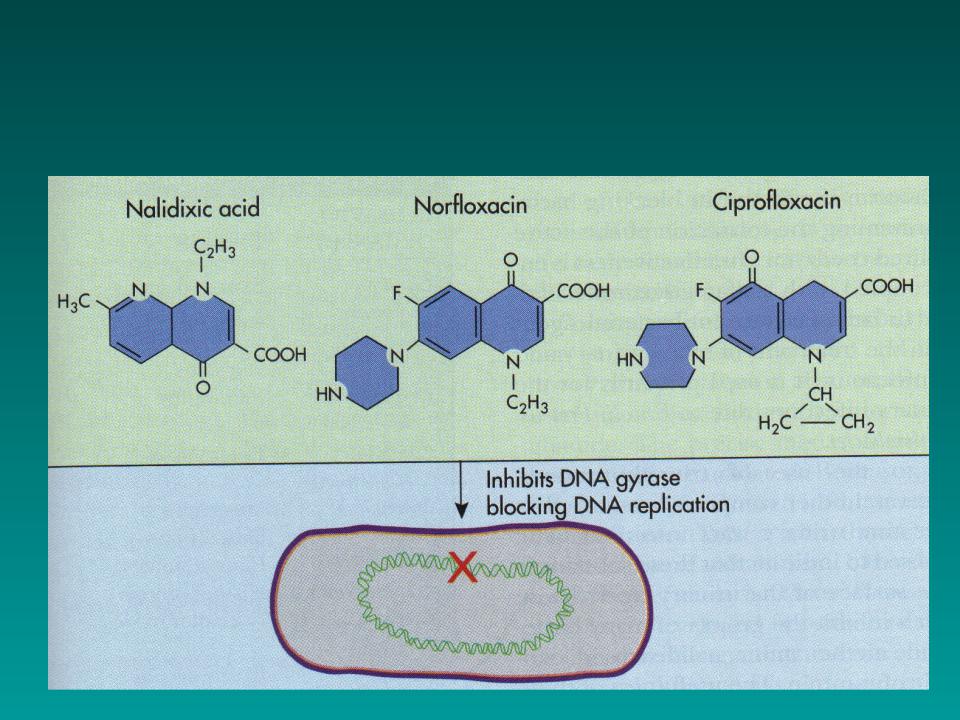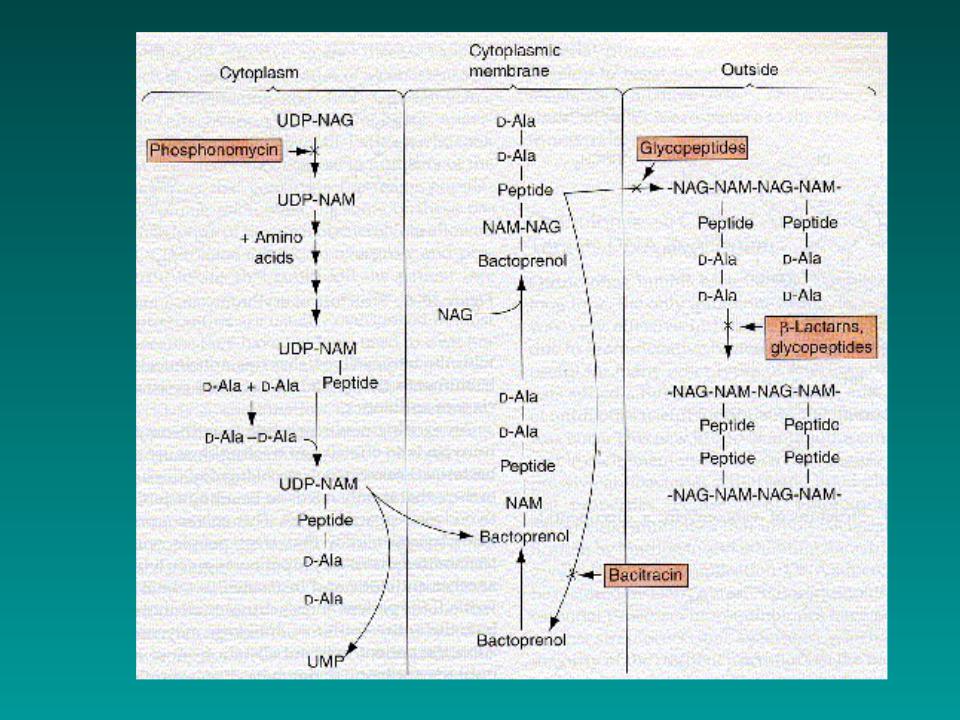
- •Chemotherapy of
- •Definitions of Antibiotics
- •Impact of Modern Healthcare on Life Expectancy
- •History
- •History
- •History
- •History
- •The Ideal Drug*
- •Antibacterial spectrum—Range of activity of an antimicrobial against bacteria. A broad-spectrum antibacterial drug
- •Susceptibility Tests
- •Minimal Inhibitory Concentration (MIC)
- •Susceptibility Tests
- •Susceptibility Tests
- •Susceptibility Tests
- •Antibiotic Mechanisms of Action
- •Mechanism of Action
- •Mechanism of Action
- •Mechanism of Action
- •Mechanism of Action
- •Mechanism of Action
- •Mechanism of Action
- •Mechanism of Action
- •Mechanism of Action
- •Mechanism of Action
- •Mechanism of Action
- •Mechanism of Action
- •Mechanism of Action
- •Mechanism of Action
- •Mechanism of Action
- •Mechanism of Action
- •Mechanism of Action
- •Mechanism of Action
- •Mechanism of Action
- •Mechanism of Action
- •Mechanism of Action
- •Mechanism of Action
- •Clinical Uses
- •Clinical Uses
- •Resistance
- •Resistance
- •Origin of Drug Resistance
- •Origin of Drug Resistance
- •Plasmids
- •Plasmids (cont’d)
- •Implications
- •Implications of Resistance
- •Implications
- •REVIEW
- •Minimal Inhibitory Concentration (MIC)
- •What are main targets of Antibiotics?
- •Mechanism of Action
- •Mechanism of Action
- •Mechanism of Action
- •Mechanism of Action
- •Mechanism of Action
- •Mechanism of Action
- •Resistance
- •Resistance
- •Mechanism of Action
- •Mechanism of Action

Mechanism of Action
(cont’d)
3. INHIBITION OF PROTEIN SYNTHESIS:
Steps in synthesis:
1.Initiation
2.Elongation
3.Translocation
4.Termination
•Prokaryotes and eukaryotes (80S) have a different structure to ribosomes so can use antibiotics for selective toxicity against ribosomes of prokaryotes (70S)

Mechanism of Action
INHIBITION OF PROTEIN SYNTHESIS |
(cont’d) |
|
•Aminoglycosides
bind to bacterial ribosome on 30S subunit; and blocks formation of initiation complex. Both actions lead to mis-incorporation of amino acids
Examples:
Gentamicin Tobramycin Amikacin Streptomycin Kanamycin Spectinomycin Neomycin

Mechanism of Action
INHIBITION OF PROTEIN SYNTHESIS
(cont’d)
•Aminoglycosides (cont’d)
broad spectrum
•Gram negative rods
•P. aeruginosa
•Drug-resistant gram negative rods
•Plague, Tularemia, Gonorrhea
•Pre-op (bowel)
•External (skin)
toxic at some level to eighth cranial nerve

Mechanism of Action
INHIBITION OF PROTEIN SYNTHESIS
(cont’d)
• Macrolides: chloramphenicol & erythromycin
bind to 50S subunit and blocks the translocation step
Chloramphenicol: broad
Anaerobes
Typhoid
Meningitis
Erythromycin:
Mycoplasma
Legionella
S. pyogenes

Mechanism of Action
INHIBITION OF PROTEIN SYNTHESIS
(cont’d)
•Clindamycin
binds to 50S subunit and interferes with binding of the amino acid – acyl-tRNA complex and so inhibits peptidyl transferase
works best against
•Staphylococcus
•Bacteroides & anaerobic gram neg rods
Penicillin allergic people

Mechanism of Action
INHIBITION OF PROTEIN SYNTHESIS
(cont’d)
•Tetracyclines
bind to 30S subunit and interferes with the attachment of the tRNA carrying amino acids to the ribosome
effective against:
•Chlamydia
•Rickettsia
•Mycoplasma
•Brucella

Mechanism of Action
(cont’d)
4.INHIBITION OF DNA/RNA SYNTHESIS
Rifampin
binds to RNA polymerase
active against gram positive cocci
bactericidal for Mycobacterium
used for treatment and prevention of meningococcus

Mechanism of Action
INHIBITION OF DNA/RNA SYNTHESIS
(cont’d)
Metronidazole
breaks down into intermediate that causes breakage of DNA
active against:
–protozoan infections
–anaerobic gram negative infections
Quinolones and fluoroquinolones
effect DNA gyrase
broad spectrum

Mechanism of Action
INHIBITION OF DNA/RNA SYNTHESIS (cont’d)

Mechanism of Action
(cont’d)
5.CELL WALL SYNTHESIS INHIBITORS Steps in synthesis:
1.NAM-peptide made in cytoplasm
2.attached to bactoprenol in cell membrane
3.NAG is added
4.whole piece is added to growing cell wall
5.crosslinks added
•the β-Lactams
•the non β-Lactams

